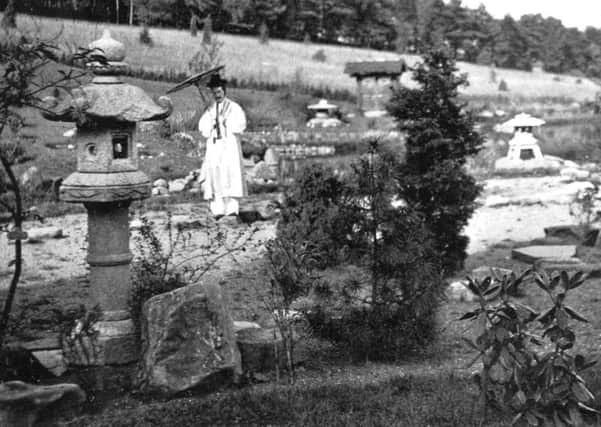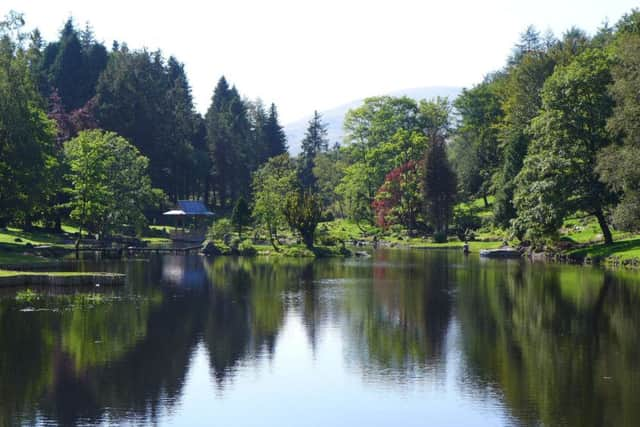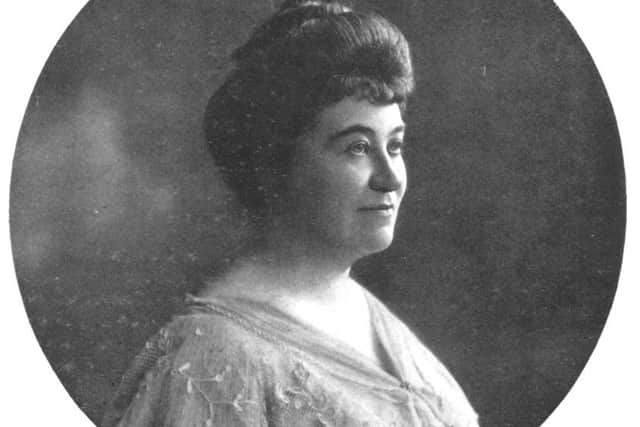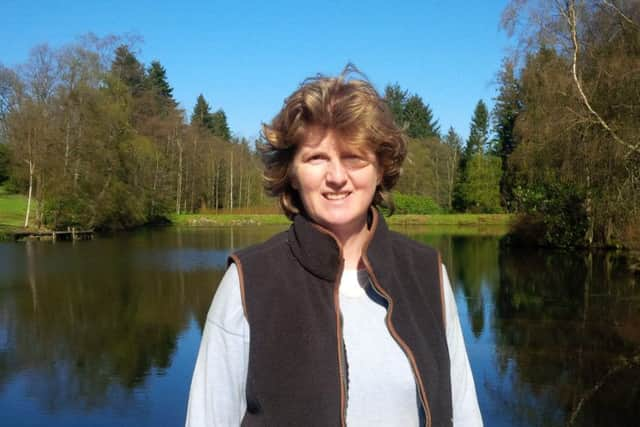Historic Japanese garden to open for first time in 60 years


The Japanese Garden at Cowden Castle estate near Dollar, Clackmannanshire, will open three days a week this summer after a major milestone in it ambitious restoration was reached.
The seven-acre garden first devised by explorer Ella Christie - who travelled solo through the Far East, often on a donkey, and was the first western female to meet the Dalai Lamai - after becoming inspired by Japanese gardens during a trip to Kyoto in 1907.
Advertisement
Hide AdAdvertisement
Hide AdAfter importing vast stocks of shrubs, trees and plants from Japan to Scotland, Ms Christie hired Japanese experts in garden design to work at Cowden, giving the project an enduring credibility.


However the “place of pleasure and delight, was destroyed in 1963 by vandals who set wooden structures on fire and pushed lanterns and shrines into the water
Slowly, Cowden tangled and overgrew until Sara Stewart, Ella Christie’s great,great niece, was handed the garden in 2008.
Ms Stewart launched an ambitious project to revive the space and recently secured £70,000 in public funds to create a new entrance way to the site.


The garden is now due to welcome visitors three days a week this summer for the first time since 1955, with the opening date to be announced by June 30.
Ms Stewart said: “I am immensely grateful that people have valued the garden to the point where we have received this piece of funding.
“It has been a long struggle at times but it is immensely gratifying that people have had faith in the project.


Advertisement
Hide AdAdvertisement
Hide Ad“Ella Christie was a pioneering traveller and she was a woman who embraced adventure.
“She created this world famous garden and we rescued it just in time.
“As I don’t have children, being able to continue her work is really my legacy for the next generation”.
Professor Masao Fukuhara from Osaka University of Arts, who restored the Japanese Garden at Kew Gardens and who has won gold and best in show at the Chelsea Flower Show, was appointed to restore Cowden in 2013.


His work built on the original vision laid down by Taki Handa, an instructor at Doshisha Women’s College of Liberal Arts, which was hired by Ella Christie to create Sha Raku En in 1908.
Even today, it remains highly unusual for a Japanese woman to design a traditional garden on this scale.
Cowden also benefitted from the skilled artistry of Professor Suzuki, 18th Hereditary Head of the Soami School of Imperial Garden Design, who visited regularly between 1908 and 1925 and declared it the “most important Japanese garden in the western world.”
Advertisement
Hide AdAdvertisement
Hide AdShinzaburo Matsuothen was employed as garden caretaker and employed until his death in 1937. He maintained the elements of three Japanese garden forms; a pond and island garden, a stroll garden and a tea-house garden at Cowden, which is recognised by Historic Scotland for its national importance.
Ms Stewart added: “That Ella Christie went to such pains to obtain the right skills and knowledge from Japan and that she was able to obtain faithful service from those strangers in a foreign land were the reasons for the success of the enterprise.”
Ms Christie was raised and home schooled at Cowden Castle but the property was demolished following her death in 1949.


The explorer started travelling at a young age through Europe. By 1904, she set out for India, Kashmir, Tibet, Malaya and Borneo and then in 1912 headed into the Russian Empire, where she became the first British woman to visit Khiva.
Work will continue at Cowden for another year to fully restore Ella Christie’s garden with around £500,000 required to complete the project and secure its long term future.